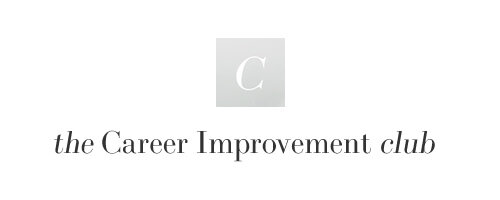What to include in a CV - You’ve Got This!
Your Curriculum Vitae (also called a CV or a résumé if you reside in the US or Canada) is perhaps the single most important document you'll produce in your lifetime, done correctly it will open the doors to amazing careers, opportunities and people. Don't underestimate it!
This initial 1 or 2-page summary allows you to express your skills, education, experience and personality when selling yourself to employers. Below we've listed what to include in a CV.
What to include in a CV…
Personal / Contact Details
The following should be included in your CV as mandatory: Full name, contact phone number, email address and general location (a full address isn't necessary a city/ town is fine).
A photograph can be a nice addition to your application, however this is down to personal choice and is more relevant to certain career paths (i.e. marketing, creative, customer facing roles etc.)
It is not necessary to include your Date of Birth, in fact I would actively advise not to include this on your CV.
A Brief Introduction
Think of this as your elevator pitch, a concise and succinct statement that sells your skills, experiences and sector specialisms. It should give the reader (a future employer) a clear idea of what you have achieved and where your career is heading.
Education & Professional Qualifications
List formal education with dates and the grades you achieved. Headline information is fine, employers and recruiters are typically only skim reading this information.
Over the years I’ve reviewed many applications where grades have simply been omitted, when this happens employers and recruiters tend to consider the worst grade was obtained (which is often not the case), I’d always recommend including your grades.
Just to add, unless you’re just starting your career I would say it isn’t necessary to include any qualifications below A-Levels.
Employment history
When listing your employment history be sure that it is done in a reverse chronological order (this CV example will give you an idea of what I mean: Reverse Chronological Resume).
Under each role include a brief summary on each of your past employers, this should cover how many employees they have and what sector they operate in. This is useful information to future employers and is often overlooked.
Focus on the duties you have performed as well as the value you’ve delivered. Quantifiable statements such as “In 2017 I designed and implemented a social media strategy which increased traffic by 32% resulting in a 4.6% uplift in sales” work well! Companies can directly relate this type of information to their business and understand how you could deliver value.
For longer careers you don’t need to show all positions (it’s likely that many older positions are totally irrelevant anyway), you’ll find that going back 10 years will be enough, oh and don’t go too heavy on bullet points, I would advise to include no more than 7 bullet points per employer.
Skills & Achievements
Here you can talk about (or list) your relevant skills and achievements, you can use an array of methods to display this information, graphs, line charts, lists etc. Either way this information is a great way to bring your CV to life by adding that little graphical touch (be bold and stand-out).
In this Modern CV Template I’ve created a design that uses doughnut graphs, where in this Resume Template I’ve used line charts to express skills.
Focus on your core skills and keep it relevant to the positions you are applying for, resist the temptation to include all software and technology you have ever worked with (does some of it even exist anymore), use an employer’s job advert to truly understand their required skills and mirror your CV against these.
Hobbies (Optional)
Considered as secondary information the hobbies / interests section is not necessary but does give you an extra chance to express your personality and include activities that might support your application.
In the past I have been asked to filter based on this field – it was a snowboarding company and they stipulated that all applicants must have an interest in winter sports. So keep things like this in mind when filling this information in.
References (optional)
Listing references is optional, however you should always include the header with the term “available on request” if you intend to leave this information blank.
I would actually advise against including direct names and contact details on your CV as this information can be misused by recruitment agents (believe me when I say this does happen and more often than you may think).
My advice would be to hold back personal reference information and only supply this directly to the employer or recruiter once your application has progressed through the initial stages.
Anything Else To Include In A CV?
If you include this information on a CV you’ll have covered all the basics and produced a solid document to take forward.
To enhance it you may wish to include additional information that relates directly to your industry. Certain employers within niche sectors sometimes like to see additional information, for example an application made for an Architectural Technician may require additional project and budgetary information or creative links and portfolios for design roles. Academic roles tend to require longer applications which include published papers and speaking gigs etc. Understand the market you’re in.
This should give you a basis for what to include on your CV / Resume for examples please take inspiration from these CV Examples listed on my website.

